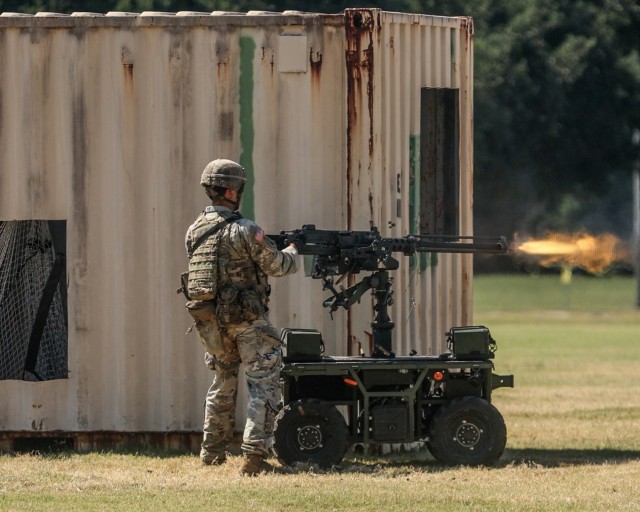
FORT BENNING, Ga. - Sept. 12, 2025 - Senior Army leaders gathered this week at the Maneuver Warfighter Conference, hosted by the Maneuver Center of Excellence and Fort Benning, Georgia, to deliver a clear message: the Army is advancing battlefield lethality by blending rigorous training with fast-moving technology to prepare formations for multi-domain operations of future warfare.
Across the conference’s main stage and multiple breakout sessions, senior leaders emphasized lethality is not a single system or program, but a continuous process of training hard, integrating tech, and validating outcomes.

“The biggest risk to the force is if we don’t transform before the next war,” said Gen. James Rainey, Army Futures Command, commanding general.
According to the Army’s chief of staff, Gen. Randy A. George, this transformation can’t come fast enough.
“Everyone gets really focused on the tech. The harder part is how do we maintain our skills inside our formations,” George said.
Underscoring the urgency of marrying training with emerging technology is the fact that conflict is forcing adaptation across the globe now, and combat losses are a harsh reality of large-scale combat operations.
Ian Sullivan, Training and Doctrine Command’s G2 director of intelligence and deputy chief of staff, provided a clear example of losses seen in current combat, estimating between 700,000 and 1,000,000 Russian casualties resulting from their war with Ukraine.

“People ask me what LSCO is, and I tell them it is an inferno – because it devours people and it devours resources,” Sullivan said. He went on to stress that survivability in LSCO stems from deception, dispersion, and disciplined training, all of which are integrated with emerging technology.
A key aspect of the conference was the opportunity for Soldiers to see and hear firsthand how new technology complements training. Live demonstrations included robot systems moving simulated casualties, drones employing simulated ordnance drops, and heavy weapons mounted on remote platforms to provide suppressive fire; all intended to showcase how machines can absorb risk and create dilemmas for adversaries.
“We can give the enemy multiple problems before there is ever a human on the objective,” said Cpt. Austin (Tice) Meyers, Alpha Company, 1st Battalion, 29th Infantry Regiment, 316th Cavalry Brigade, experimental forces commander.
Rainey agrees with this approach.
“Let’s transfer all the risk to machines; let them make first contact so (the Army) can optimize its greatest asset – our men and women – to use their creativity, ingenuity, free will, and ethical decision making to gain the advantage,” he said.
“No matter what happens with technology,” though Rainey said, “it’s certain we are going to have to fight the close fight. Make sure ... your companies and platoons can close with (the enemy) and finish the fight,” Rainey told the young Soldiers attending the conference.
Gen. Andrew Poppas, U.S. Army Forces Command commanding general, emphasized in his day-one presentation how divisions are training to replicate real-world combat conditions and stressed that lethality begins with rigorous training, including rehearsals, gunnery, and battle drills that ensure formations can fight through adversity.
“The non-negotiable is that we are ready to fight and win tonight,” Poppas said.
Readiness, he noted, comes from empowering leaders at every echelon to build formations that are tough, adaptable, and lethal. At the National Training Center in Fort Irwin, California, the Joint Readiness Training Center at Fort Polk, Louisiana, and at Fort Benning, Soldiers are pushed into “dirt, dark, and mud” environments where friction is real and lethal warriors are formed.



Social Sharing